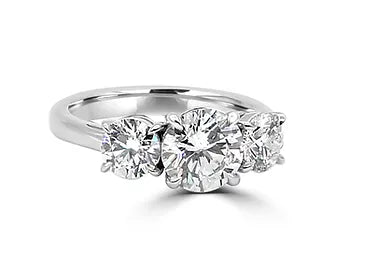When Turkish traders introduced this “Persian blue” stone to Europe via the Silk Road in the 13th century, they influenced the gemstone’s name. The word “turquoise” comes from the French pierre tourques for “Turkish stone.”
Turquoise is a copper aluminum phosphate and considered a soft stone. In Nature, it occurs in the range of hues from sky blue to grey-green, and is mostly found in places where there is a high concentration of copper in the soil.
The blue color is created by copper, the green by bivalent iron and a certain amount of chrome. Often, the rock has veins or blotches running through it, which are brown, light grey or black depending on where it was found. These lively, more or less regular patterns are known as 'turquoise matrix'.
Turquoise was among the first gems to be mined. Most mining is worked by hand with little or no mechanization. However, turquoise is often recovered as a byproduct of large-scale copper mining operations, especially in the United States. It's also found in Mexico, Israel, Iran, Afghanistan and China. The most beautiful turquoises, in a splendid light blue, comes from deposits from North Iran. The oldest turquoise mines are in the Sinai Peninsula of Egypt.

The earliest evidence of turquoise gemstones comes from ancient Egyptian tombs, which contain elaborate turquoise jewelry dating back to 3000 BC. Egyptians set turquoise in gold necklaces and rings, used it as inlay, and carved it into scarabs. Most notably, King Tut’s iconic burial mask was extravagantly adorned with turquoise.
Ancient Persians decorated extensively with turquoise, often engraving it with Arabic script. Turquoise covered palace domes because its sky-blue color represented heaven. This later inspired the use of turquoise in buildings like the Taj Mahal. Turquoise also adorned the ceremonial dress of early Native American and Tibetan rituals and medicine people.
Healing and Chakra practices and beliefs today, that come from ancient wisdoms:
Turquoise is believed to be the bringer of good fortune or a talisman of good luck to protect the wearer against the 'evil eye'.
In South, Central and North America too, the turquoise has always occupied a very special position among gemstones. The Aztecs in Mexico, for example, used to decorate their ceremonial masks with this stone which was holy according to their beliefs. The Indians of North America, who still produce a good deal of traditional silver jewelry with turquoises today, believe that the sky-blue gemstone opens up a direct connection between the sky and the sea.
At all times and over the world, turquoise has been worn as natural protection against the powers of darkness. If in earlier times they preserved horse and rider from unexpected falls, they are regarded today as the protective stone of pilots, air crews and other occupational groups who are exposed to an especially high degree of risk.
In modern gemstone therapy, those suffering from depression are recommended to wear a turquoise or a chain with turquoise beads.
Turquoise is also associated with Sagittarius Astrological sign. Many healers believe that the healing powers of Turquoise are stronger in Green Turquoise such as Tibetan Turquoise or Nevada Turquoise are more powerful. The green Turquoise carries a slightly different vibration from the more vivid blue Turquoise. This different vibration in the green Turquoise, as far as the healing powers of Turquoise, are especially useful for clearing throat chakra blockages and suppressed self-expression back down the ancestral line until the source is cleared.
If you look to purchase Turquoise, as always when purchasing any gemstone always ask what kind of treatment does it have. Most gem stones today even if they are natural go through some sort of treatment to preserve the stone, or to enhance color or hardiness. The best quality turquoises are of a pure, radiant sky blue.
Disclaimer: This information was gathered and collected from many different sources. We have no copy rights or authority on this information.




